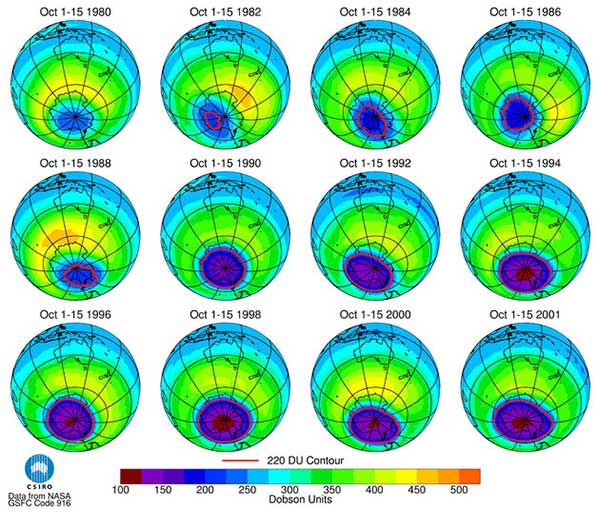[Source: The Huffington Post] “We can now be confident that the things we’ve done have put the planet on a path to heal,” one scientist says.
Nearly three decades ago, a group of alarmed policymakers, armed with data about a large — and growing — hole in the ozone layer, met in Montreal and agreed to curtail the use of the chemicals responsible.
The resulting Montreal Protocol set standards to rebuild the atmospheric layer that shields the Earth from harmful radiation. Today, it’s considered the most successful environmental treaty of all time.
Why? Because it worked. Between 1980 and 2000, the use of harmful gases like chlorofluorocarbons, or CFCs, fell by about 97 percent.
Now, according to a report published Thursday in the journal Science, the ozone layer is starting to heal, and the positive steps appear to be a direct result of our collective human action.
The implications aren’t lost on the report’s lead author, Susan Solomon, a professor of atmospheric chemistry and climate science at the Massachusetts Institute of Technology.
“We can now be confident that the things we’ve done have put the planet on a path to heal,” Solomon told MIT News. “Which is pretty good for us, isn’t it? Aren’t we amazing humans, that we did something that created a situation that we decided collectively, as a world, ‘Let’s get rid of these molecules’? We got rid of them, and now we’re seeing the planet respond.”

The hole in the ozone layer above Antarctica expands in this 21-year span of satellite images from 1980 to 2001. Today, scientists say the hole is shrinking.
In the last several years, scientists have noted both an increasing trend in ozone layer health and a decrease in the amount of chemicals like CFCs that negatively affect the ozone layer. However, until now, they generally shied away from directly linking those improvements to human effort.
Researchers at MIT, the National Center for Atmospheric Research and the University of Leeds in the U.K. found the ozone hole is about 1.5 million square miles smaller now than it was in the year 2000 — an area MIT notes is equivalent in size to about half the contiguous United States.
NASA expects the hole in the ozone layer to fully recover by the year 2070.
But don’t bust out the champagne just yet: As National Geographic notes, CFC’s linger in the atmosphere for between 50 to 100 years. While we’re on the right track, we aren’t quite there.
Still, that doesn’t mean there isn’t reason to be optimistic.
“It’s been quite a remarkable history,” Solomon, whose research 30 years ago helped prompt the Montreal Protocol in the first place, told National Geographic. “It gives us hope that we shouldn’t be afraid to tackle large environmental problems.”
Source: The Huffington Post
July 1, 2016


